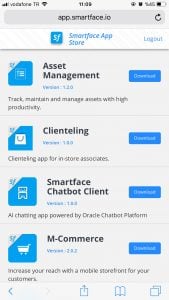How to Solve The Dilemma of MDM (Mobile Device Management) in BYOD (Bring Your Own Device) Cases Using MAM (Mobile App Management)
As mobile devices get more capable and affordable, enterprises are realizing the benefits of enterprise mobility such as agility and productivity intensively.
However, mobility introduces a serious burden on enterprises from security, management as well as the cost perspective.
Previously, only some employees were using company-issued notebooks, which are well-protected with things like data encryption, domain enrollment and VPN. Their only purpose was work, and the mobility of the devices were limited, making is less prone to accidents or theft.
However, with enterprise mobility, there is an ongoing mind shift not just regarding the use of devices but also the management of the devices.
Unlike company-issued notebooks, providing mobile devices to employees do not work in all cases for certain reasons.
Such devices may not be embraced as much as personal devices due to reasons like preference over iOS over Android or being not comfortable with the form factor. For this reason, they might be more prone to accidents and losses. Usually, these devices are provided along with a company phone line, employees might be forced to carry a second device for the personal phone line. This is something burdensome for most employees and it may make devices to be disregarded with as little use as possible.
For this reason, Bring Your Own Device (BYOD) or Choose Your Own Device (CYOD) policies are emerging so that the benefits of the enterprise mobility initiatives can reach its maximum potential.
In its latest Predicts 2018: Mobile, Endpoint and Wearable Computing Strategies report, Gartner indicates that
By 2022, more than 75% of smartphones used in the enterprise will be bring your own device (BYOD), forcing a migration from device-centric management to app- and data-centric management. (Source: Gartner)

However, another concern arises in such cases, which is keeping the company data secure as many things can go negatively with personal devices on different levels, such as malware, theft, intentionally malicious acts or accidents, etc.
This is where Mobile Device Management (MDM) solutions first come to one’s mind. In theory, it is a highly viable solution for security issues with things like
- Remote data access for all types of stored data including but not limited to apps, photos and messages
- Remote data wipe
- Real-time location tracking
- Application and network restrictions
- Screenshot capture, etc.
These policies seemingly solve the downsides of the BYOD policies.
In practice though, things do not work as expected, not from a technical perspective but from a behavioral perspective.
Only a handful users get to enroll their personal devices to MDM due to the very nature of the solution. The enterprise may provide all guarantees that they will not use MDM invasively in personal devices, but once a user gets their device enrolled, there is to turning back. The enterprise can apply new policies anytime, which actually means that the enterprise is taking ownership of the personal device.
Moreover, in some cases, the enterprise mobile applications do not contain sensitive data and the only reason MDM is used is for in-house distribution, which is an over-costly solution for a simple need.
In B2B cases, where the enterprise cannot force policies, MDM is not even an option for application distribution.
The question then becomes, how can an enterprise ensure proper distribution and security of enterprise apps without crippling enterprise mobility efforts or alienating users.
This is where MDM enrollment-free Mobile Application Management (MAM) solutions come in play. Just like how cross-platform native mobile development approaches provide best of both worlds in terms of productivity and quality, MAM solutions provide the highest level of security without the invasion of personal privacy.
MAM solutions provide similar security features that MDM solutions provide only at an application level with features like
- Application data encryption and leak protection
- Remote application data wipe
- Root/jailbreak detection
- Per-app VPN
- Enrollment-free enterprise app store and more

With its “no-ops” approach, Smartface Cloud provides an end-to-end solution for mobile app development and mobile app management. Smartface Cloud lifecycle management modules also support apps that are not developed with Smartface.
You can use Smartface Cloud to develop native iOS and Android apps just with JavaScript and then manage these applications in the same environment.
As for the lifecycle, Smartface Enterprise App Store eliminates the need for expensive, invasive and arduous process of MDM enrollment for internal app distribution for B2B or B2E for any type of mobile app.
Just in a few minutes, you can have an enterprise app store up and running with features like
- Customizable storefront branding
- Custom URL
- Ability to distribute any type of enterprise IPA/APK
- Ability to redirect users to a custom URL
- LDAP (Active Directory) and OAuth support for user authentication
- Detailed user and device reports
Enjoy the comfort of enterprise mobility in the cloud with Smartface.


